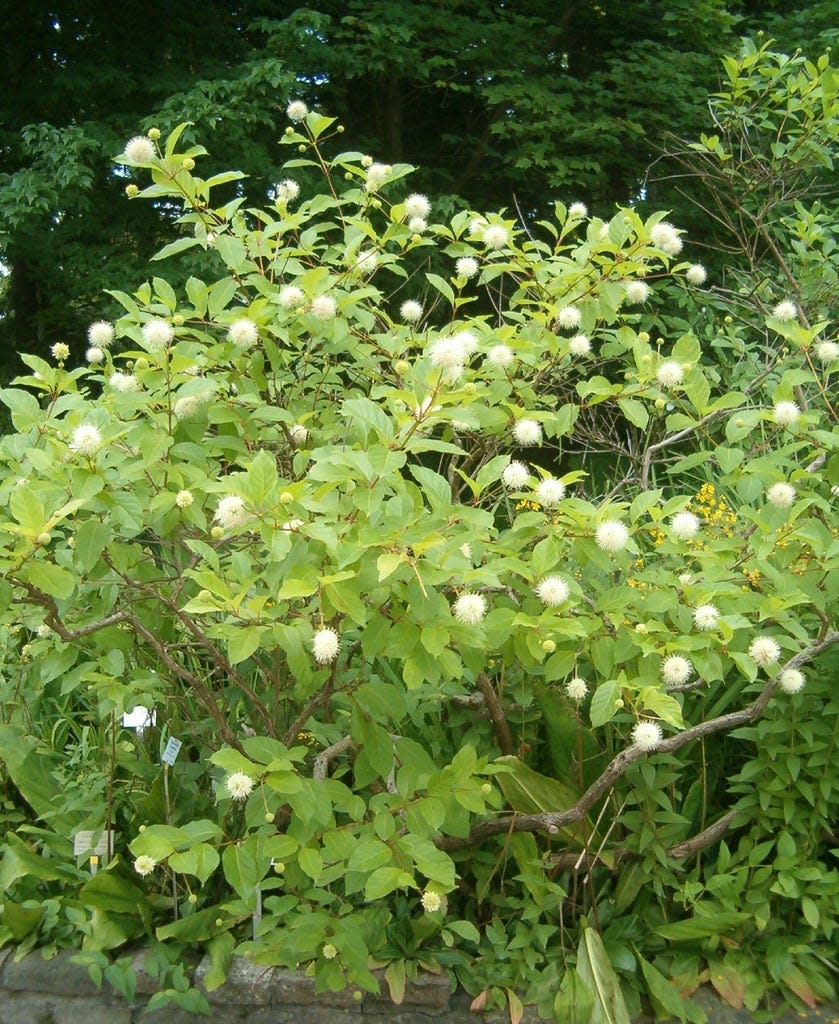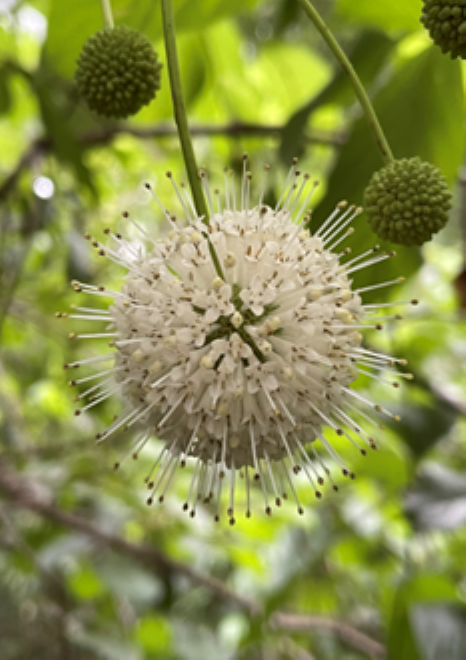Erosion control and sustaining wildlife among many benefits of planting buttonbush

Editor’s note: Once a month, OSU Extension Master Gardener volunteers in Franklin County profile a plant that occurs naturally in central Ohio.
Consider adding buttonbush, Cephalanthus occidentalis, to your yard to boost ecological value in continuously moist or wet areas. This quirky, water-loving shrub requires wet soils and full to part sun to be successful. Buttonbush can reach heights of 5-12 feet with a spread of 4-8 feet, making it a large shrub. Its irregular growth formation can make it look a bit unkept, but rest assured, it can be managed with pruning and even shaped to mirror a compact tree.
Poppies a-poppin': Early-blooming yellow wood poppy well-suited to native plant gardens
Buttonbush is slow to leaf out in the spring, making it one of the last native plants to do so. Its dark green, glossy leaves blend into the landscape until the blooms demand attention. This multi-stemmed shrub will display its white flowers to bees, butterflies, moths and birds, luring them into the landscape.
The pincushion-like flowers are long-lasting and resemble a small bursting firework, as the spherical blooms are covered in a fringe of long pistils. The flower is elegantly positioned at the end of a long peduncle or flower stalk, enhancing its beauty. The blooms begin in June and the display can last through September as long as the soil does not dry out.

Favored by birds and bees
Fragrant flowers smell sweet like honey, earning the lesser-used moniker of honey balls, drawing the attention of honeybees. Buttonbush supported a lively beekeeping industry long ago, but has since become a prized plant for wetland habitat restoration. It is a plant of special value, according to the Xerces Society of Invertebrate Conservation, and is a host plant to several species of sphinx moths.
How sweet it is: Sugar maples provide shade, syrup and stunning scenery
Spent blooms transform into a reddish-brown, ball-shaped nutlet favored by many bird species including ducks and other waterbirds. The nutlets or “buttons” contain the plant seeds. The nutlets develop between August and November and are a valuable food source to wildlife, often persisting into winter and adding to the plant’s seasonal aesthetics.
Buttonbush is helpful to mitigate erosion, as it stabilizes soils, forming thickets by suckering, and has a rapid growth rate of up to 12 inches per year once established. It is considered a pioneer species in frequently flooded areas. Buttonbush would be right at home in yards across Ohio with the right conditions.
Growing requirements
Hardiness zones: 5-11
Sun: Full to part sun
Water: Best in wet, moist soil
Soil: Limestone-based, clay, loam, sand loam, medium loam
Maintenance: High water use
Pests and disease: Occasional browsing by white-tailed deer, no significant pests/disease
This article originally appeared on The Columbus Dispatch: Native Ohio buttonbush plant feeds birds, bees, controls erosion

